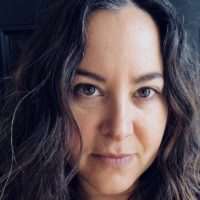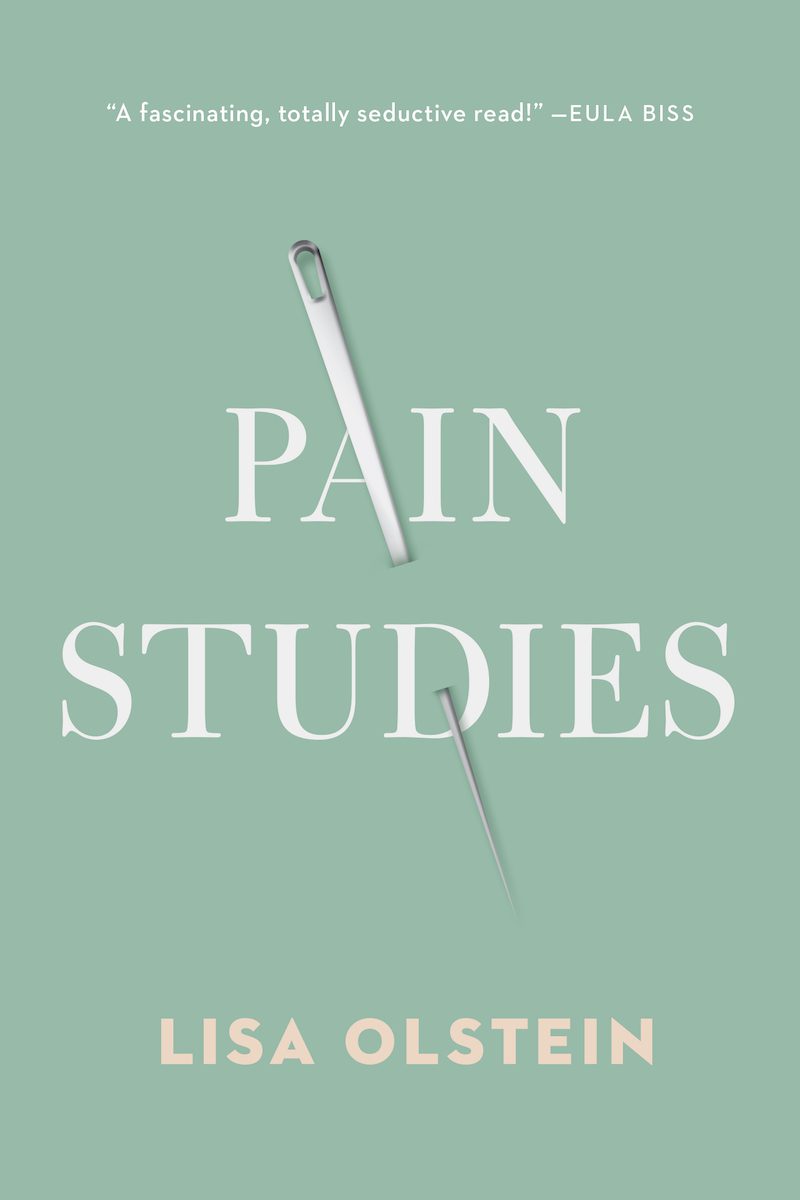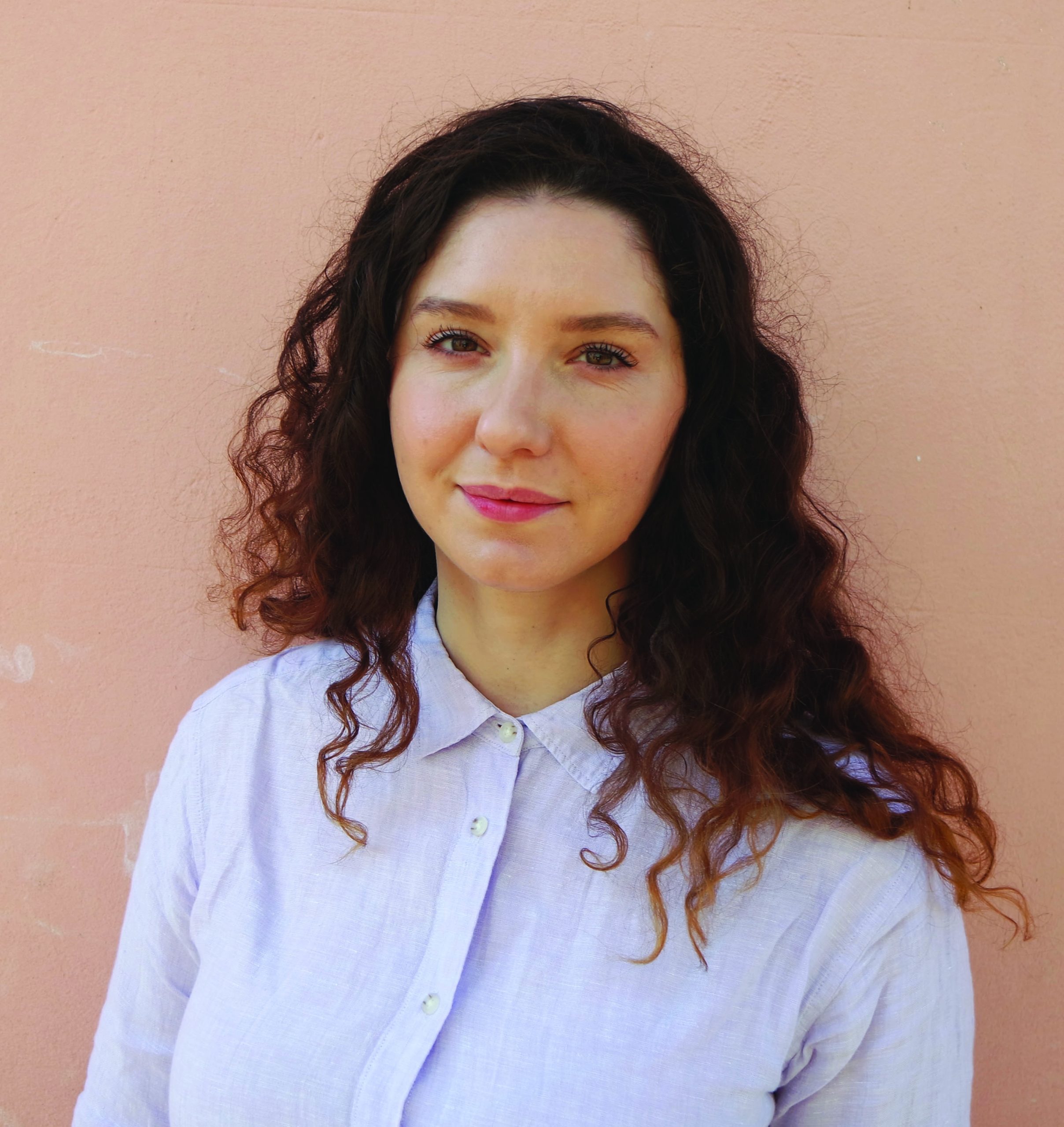Lisa Olstein’s first book of prose, Pain Studies, is a lyric essay about many things including living with a migraine disorder.
Olstein is the other of four books of poetry, including Lost Alphabet and Late Empire. Of Pain Studies, Library Journal says, “Unique in its exploration of the relentlessness of chronic pain, this work succeeds because of creative and candid elaborations on something that is common but difficult to describe.”
Lisa Olstein and I teach together at the University of Texas, in an arrangement I like to call Good Cop/Mall Cop. (I am definitely the Mall Cop.) She has been describing difficult things to me for years now, things I would have thought ineffable, with good humor and brilliance. We talked about modern art, music, and migraine.
***
The Rumpus: I’m always interested in how projects begin. Did you know that you wanted to write a book of prose, or were you interested in writing about pain over many pages, and then realized there was something about the lyric essay that made sense?
Lisa Olstein: The first glimmers of what became Pain Studies were actually the glint of an internal taboo. I was more than just ambivalent about writing about my experience with pain, I was downright apprehensive, even superstitious. This had to do with some things I can name—denial as coping mechanism, resistance to devoting more bandwidth to this unwanted presence, fear of self-exposure, of being a woman writing about a condition that disproportionately affects women—and other things I probably can’t. But, of course, the forbidden is its own draw. All I knew at the outset was that it’d be prose, that it’d riff off a range of sources, and that I wanted it to move with some of the associative and lyric logics that guide poems.
Rumpus: I love the notion that there are things that we forbid ourselves to do in writing, almost on the subconscious level. Once you accepted that you were going to write about your experience with migraines, did you find other things you allowed yourself to do in this book?
Olstein: It felt more like a necessity than an allowance, but I describe a fair amount of embodied and vulnerable personal experience, which is different from the way my life tends to enter my poems. So I guess I had to allow myself to share certain kinds of information that otherwise I probably wouldn’t. I also found that as much as writing about migraine, I wanted to be writing from and into it, guided by its strange intensities and qualities of attention. This meant allowing myself to go down some pretty unexpected rabbit holes—for example, poring obsessively over the trial transcript of Joan of Arc.
Rumpus: You often use the phrase “thinking/feeling.” Do you think of those things as two different activities?
Olstein: I think we live in a culture that often divides them and assesses “thinking” as a rational and intellectual knowledge-sorting or knowledge-producing act and feeling as emotional and at best a different kind of knowing that sometimes we make an allowance for—so-called emotional intelligence and all that. I might also rely on it as a way to introduce the mechanics of perception into the equation—the way the brain’s processing of sensory information is integral to but under-explored. I often encounter notions of thinking as if it’s a purely rational or intellectual practice that leaves out the body.
Rumpus: I asked because the book is sort of—if you’ll pardon the metaphor—an eight-track book, and I’m wondering about the idea of an eight-track brain. Something I love about the book, and your work in general, is that it’s interested in thinking about perception as separate from merely going around the world and perceiving things. Are you aware of going through the world thinking about several things simultaneously, in harmony with each other, the way they are in the book?
Olstein: We’re so often experiencing many things simultaneously that ring out at different registers, and I’m interested in teasing out what feels to me like these different aspects. I’m also fascinated by how we make connections, because of how our brains are always moving according to both incoming external data and our internal weather, whatever might be defining it in any given moment, in not just a layered way, but in an incredibly associative way that’s easy not to recognize because it happens so quickly. So you think, Oh, I just flickered from one thought to the next, but if you actually pause over it, you can tease out why and how you bridged from here to there. I find that fascinating, because the bridge is often functionally invisible and, if I’m able to trace it, not at all what I would have expected.
Rumpus: Do you think your experience with migraine makes you more attuned to how brains think, and specifically to how your brain thinks?
Olstein: Yes, for sure. Maybe that’s why I do the thinking/feeling over-articulation, because for me, one bizarre aspect of migraine is that it slows things down and turns the volume up, making perceptual processes and the unfolding of thought more available.
I had one or two migraines as a child—I didn’t know that that’s what they were, they were just these very bad headaches—but in retrospect I realize now that I also had a good handful of auras without the head pain. Those auras manifested as a visual and aural change in the time signature of my experience of the world around me. A funny slowing down of perception, is how I remember it feeling, and now I recognize that as one of the things that migraine does. It’s a sixteen-phase neurological cascade that moves all the way from your lizard brain to your pre-frontal cortex and it can create all of these effects as it goes through that cascade. There are definitely plenty of hours when migraine just makes me stupid and less available to the world and less acute in my thinking, but there’s also a consistent aspect involving heightened sense perception and something about the slowing down of my brain’s experience of time that enhances, I think, my ability to observe it.
Rumpus: We’ve both been using musical metaphors, and I wonder if you’d be willing to talk about the place of music in your work?
Olstein: Music was playing constantly in our house when I was a kid, and that music ranged from the 60s, 70s, and 80s rock of my parents’ taste, but also a pretty wide range of classical and jazz.
I probably went to a dozen Neil Young shows before I was eighteen, and I also went to the symphony pretty regularly. Music provides the easiest access I have to emotion, to mood, and, also to voice in terms of language, to creating a voice and feeling a point of entry. My poetry is almost always spurred by the music of a phrase as opposed to an idea. An idea is nice but it doesn’t lead to a poem. The only way I know how to enter into the kind of magnetic feeling that I need to be inhabiting in order to write, is finding the music of a phrase or a voice.
Rumpus: And did you find that much different writing prose than you do writing poetry?
Olstein: Not as different as I might have expected. One of the primary ways I could conceive of the book’s structure was in a musical sense in terms of movement and returns. At the level of the sentence, it was a little bit different than the way it works in poems, but it was actually just as essential. I don’t think I know how to write if I’m not guided by sound—that’s when it feels like I’m flailing or straining.
Rumpus: Did you write a whole draft when you were in Marfa? I know you had a residency through the Lannan Foundation.
Olstein: I probably wrote two-thirds of it there, holed up and alone and enjoying these incredibly long stretches of silence and solitude and work, which is not—as you know—typically available to me in my daily life.
Rumpus: And do you think Marfa got into the book?
Olstein: It certainly got into the book through Donald Judd’s art. I’d been to Marfa briefly a few years prior, and had done the half-day tour at the Chinati Foundation. I particularly liked the boxes (100 works in milled aluminum), but in the context of the tour, you’re sort of herded through in a group and you get maybe twenty minutes in the space, which you’re sharing with other people. So, I knew that I liked them and that I wanted to visit them again, but it wasn’t until halfway through my residency that I got in touch with the folks over at Chinati to ask if I could spend some time with that artwork. They were generous in a way I didn’t know to hope for: I was able to spend several long stretches of time alone with work. It was an incredible way to experience that particular art which is primarily working with light and your own perception of the changing reflections on these highly reflective, brushed aluminum boxes. Experiencing them alone and over extended periods of time was an extraordinary gift that was only possible in Marfa on this particular residency. I also think the book was very much marked by my being able to be so completely immersed in it and in solitude: it’s conversational in a way that has to do with how we talk to people in our minds when we’re alone.
Rumpus: I wonder whether you understood them then, the Judd boxes, as a way to think about migraines or whether that came later?
Olstein: It was immediate and very much in the moment. It wasn’t like I had the idea, Oh, I’ll visit the boxes because I can already see how they’ll be analogs of migraine—it was a surprise of actually being there. Of course, I was already in this mindset of thinking about migraine and perception. I was also thinking a lot about formal repetition and the idea of the unit as a container for unruly or audacious material. When I encountered the boxes again, I realized, here are these discrete, repeated forms, uniform in material and dimension, but endlessly various in terms of their internal architecture and, even more, in terms of their radically shifting appearance depending on how light is playing across them. In that way they felt very much analogous to migraines, because in a way, a migraine is a migraine, they’re a repetitive form, they’re a unit, and yet within them the same elements play out in an infinite variety of ways. So the boxes fit formally, and then they opened up to me as these perceptual analogs, as well, because they not only highlight aspects of sensory perception, they bring your attention to the very process of it, which is what migraine does as well. By giving you a much more acute sense of smell, for instance, or by making you much more sensitive to light, you have this onslaught of sensory experience but then you realize that the senses we take for granted because of their seeming consistency are actually these unbelievably malleable instruments that dictate everything about our experience. And I think that’s what the boxes are about.
Rumpus: There are so many strands in this book: House, Joan of Arc, Lucretius, Woolf—did you know all along what art and philosophy you wanted to incorporate? Was there anybody you tried to pull into the book, but failed?
Olstein: Some hunches panned out, such as the Joan material and excerpts from Pliny’s Natural History, while some didn’t, Frida Kahlo’s diaries, for instance. Other sources came into play serendipitously: I turned to House mostly as a diversion and was surprised when it became a central text, then more surprised to find myself putting it in dialogue with fragments of Antiphon the Sophist. I definitely didn’t anticipate analyzing my relationship to Bob Seger’s Night Moves! In the context of the residency, I was able to write with an unusual degree of feral-ness and dive headlong into what I think of a poet’s approach to research, that is, one guided by resonance and fascination—an almost magnetic pull—which, incidentally, parallels the way interests manifest during certain phases of migraine. I think the sources that stuck were the ones with which I fell into some kind of impassioned conversation.
Rumpus: I’m interested in this notion of a poet’s approach to research! Do you think lyric essay should be fact-checked? Does it have any duty towards accuracy?
Olstein: It was in a conversation with Eula Biss and Deb Olin Unferth that I remember first talking about researching like a poet. They were commiserating about recently having had essays relentlessly fact-checked by Harper’s, which led us to a version of the question you just asked. What I mean by that shorthand is a freedom to go where fascination guides you rather than where historical or scholarly obligations might point. On the other hand, in a lyric essay I assume that the connections forged with and between source materials are a priority in their own right, as interactive and artistic a practice as any other. I feel strongly that sources should be attributed and that any liberties taken—whether with facts, historical people, texts, or even memories—should be made legible as liberties. Beyond that, I feel not just free but responsible for shaping the material toward accuracies of entirely un-fact-checkable varieties.
Rumpus: I know that you’re a beloved teacher and I wonder if you think your teaching feeds your poetry, and if it feeds your prose in a different way—I was about to say since we speak in prose, but I don’t know if you think, when you talk to your students, that you’re speaking in paragraphs or in stanzas.
Olstein: I think that teaching has a symbiotic relationship with my writing life, and also a parasitic one. It gobbles up time and attention and redirects creative impulse, but it also gives me meaningful ways to bear down on what I’m really thinking, not to mention new things to think about. That kind of shift in vantage-point and exposure feeds me. Teaching also gives me a ton of practice with the difficult negotiation between the private act of writing and the still intimate but more public act of how that writing is received, how it translates.
Rumpus: Do you have a different feeling about exposure having written something that’s nonfiction?
Olstein: God, yes.
Rumpus: I always say to students that fiction is calling up a talk show host and going “I have this friend with this problem…” which I assume is also true of poetry, but with nonfiction, it’s not your friend, it’s clearly you.
Olstein: Yeah, this is definitely me in a very different way. I’m a little uncomfortable with it, to be honest.
***
Photograph of Lisa Olstein by David Goodrich.





